
Motorola just brought back the flip phone.
The company announced its latest device, the Motorola Razr, at an event in Los Angeles, California. While not the first folding phone we’ve seen this year, it is the first vertically folding device that mirrors the clamshell flip phones everyone used to have.
But while the new Razr succeeds in mixing deep nostalgia with a futuristic take on the smartphone, it remains to be seen if Motorola can push past the many issues that have plagued early folding phones. Plus, the Razr doesn’t come cheap, which means its shortcomings may make it an even tougher sell.
However, there’s something about the Razr that just feels right. You really have to hold it and fold it to get what makes the Razr stand out. Motorola put a lot of thought into the fold and it shows.
Motorola Razr
Moto Z4
Display
Flex View: 6.2-inch foldable pOLED, 2142 x 876 pixel 21:9 / Quick View: 2.7-inch gOLED 600 x 800 pixel 4:3
6.39-inch IPS LCD, 2,340 x 1,080 pixels, 19:9 aspect ratio
Processor
Qualcomm Snapdragon 710
Snapdragon 675
RAM
6GB
4GB of RAM
Storage
128GB
128GB
Dimensions (in.)
Unfolded: 72 x 172 x 6.9mm / Folded: 72 x 94 x 14mm
75 x 158 x 7.35mm
Weight
205g
165g
Rear Facing Camera
16MP, f/1.7, 1.22um, EIS, Dual Pixel AF, Laser AF, dual LED flash
48-megapixel (f/1.7, OIS, laser autofocus)
Front Facing Camera
5MP, f/2.0, 1.12um, screen flash
25-megapixel (f/2.0)
OS
Android 9.0 Pie
Android 9.0 Pie
Battery
2510mAh
3,600mAh
Network Connectivity
LTE, UMTS, CDMA, GSM
LTE/UMTS/CDMA/GSM
Sensors
Fingerprint reader, accelerometer, magnetometer, gyro, proximity, ambient light, GPS, ultrasonics
In-display fingerprint, accelerometer, magnetometer, gyro, proximity, ambient light
SIM Type
eSIM
Nano-SIM
Launch Date
June 13, 2019
Misc
Colours: Noir Black
Colours: Flash Grey, Frost White | Headphone jack
Display
Motorola Razr
Flex View: 6.2-inch foldable pOLED, 2142 x 876 pixel 21:9 / Quick View: 2.7-inch gOLED 600 x 800 pixel 4:3
Moto Z4
6.39-inch IPS LCD, 2,340 x 1,080 pixels, 19:9 aspect ratio
Processor
Motorola Razr
Qualcomm Snapdragon 710
Moto Z4
Snapdragon 675
RAM
Motorola Razr
6GB
Moto Z4
4GB of RAM
Storage
Motorola Razr
128GB
Moto Z4
128GB
Dimensions (in.)
Motorola Razr
Unfolded: 72 x 172 x 6.9mm / Folded: 72 x 94 x 14mm
Moto Z4
75 x 158 x 7.35mm
Weight
Motorola Razr
205g
Moto Z4
165g
Rear Facing Camera
Motorola Razr
16MP, f/1.7, 1.22um, EIS, Dual Pixel AF, Laser AF, dual LED flash
Moto Z4
48-megapixel (f/1.7, OIS, laser autofocus)
Front Facing Camera
Motorola Razr
5MP, f/2.0, 1.12um, screen flash
Moto Z4
25-megapixel (f/2.0)
OS
Motorola Razr
Android 9.0 Pie
Moto Z4
Android 9.0 Pie
Battery
Motorola Razr
2510mAh
Moto Z4
3,600mAh
Network Connectivity
Motorola Razr
LTE, UMTS, CDMA, GSM
Moto Z4
LTE/UMTS/CDMA/GSM
Sensors
Motorola Razr
Fingerprint reader, accelerometer, magnetometer, gyro, proximity, ambient light, GPS, ultrasonics
Moto Z4
In-display fingerprint, accelerometer, magnetometer, gyro, proximity, ambient light
SIM Type
Motorola Razr
eSIM
Moto Z4
Nano-SIM
Launch Date
Motorola Razr
Moto Z4
June 13, 2019
Misc
Motorola Razr
Colours: Noir Black
Moto Z4
Colours: Flash Grey, Frost White | Headphone jack
All about the hinge
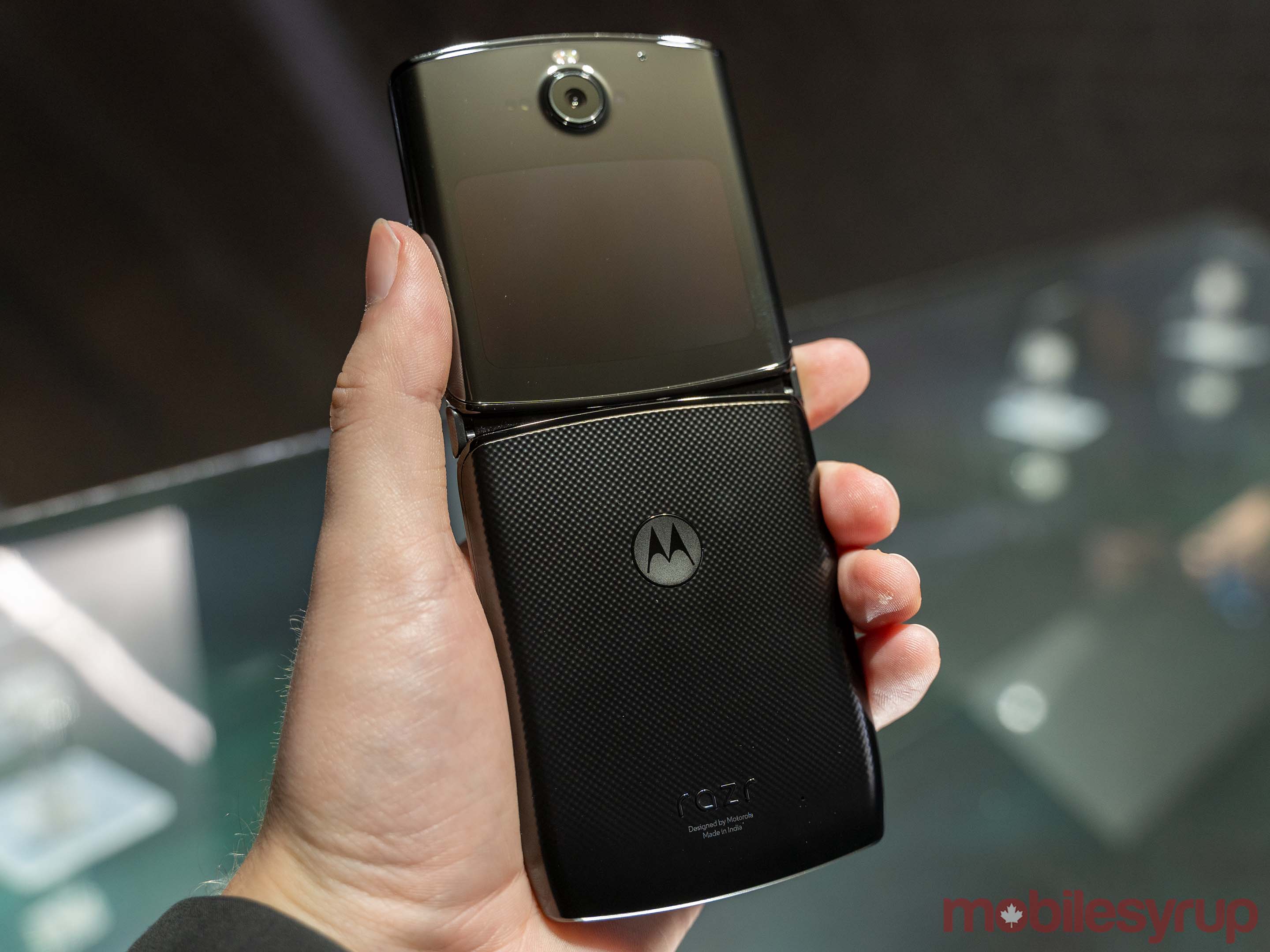
Motorola shared several details about how it designed the Razr hinge and its “patent-protected zero-gap” design. As we learned with Samsung’s Galaxy Fold earlier this year, the hinge design is incredibly important. Any gaps could allow dirt or debris to get under the display and cause significant damage.
However, the feel of the hinge is equally important, especially in a device like this. You’ll be flipping it open and closed all the time, after all — it better feel smooth.
In my brief time with the Razr at the event, I was impressed by how smooth the hinge worked. It was also fairly stiff, so don’t expect to open and close the phone with a snap of your wrist. As with other folding devices, only time will tell how well the hinge will hold up. It’s more critical on a device like this, though, as the hinge is so integral to its function.
Motorola explained what’s going on inside the hinge as well. When you unfold the Razr, metal plates slide underneath the display. These help support the flexible panel — which Motorola calls ‘Flex View’ — as well as pull it tight. In theory, this should help eliminate the mushy feeling flexible screens have. When you fold it, the plates slide out of the way and allow the screen to bend with a curve, which prevents creasing or damage. If you look closely when folding the Razr, you can see it curve.
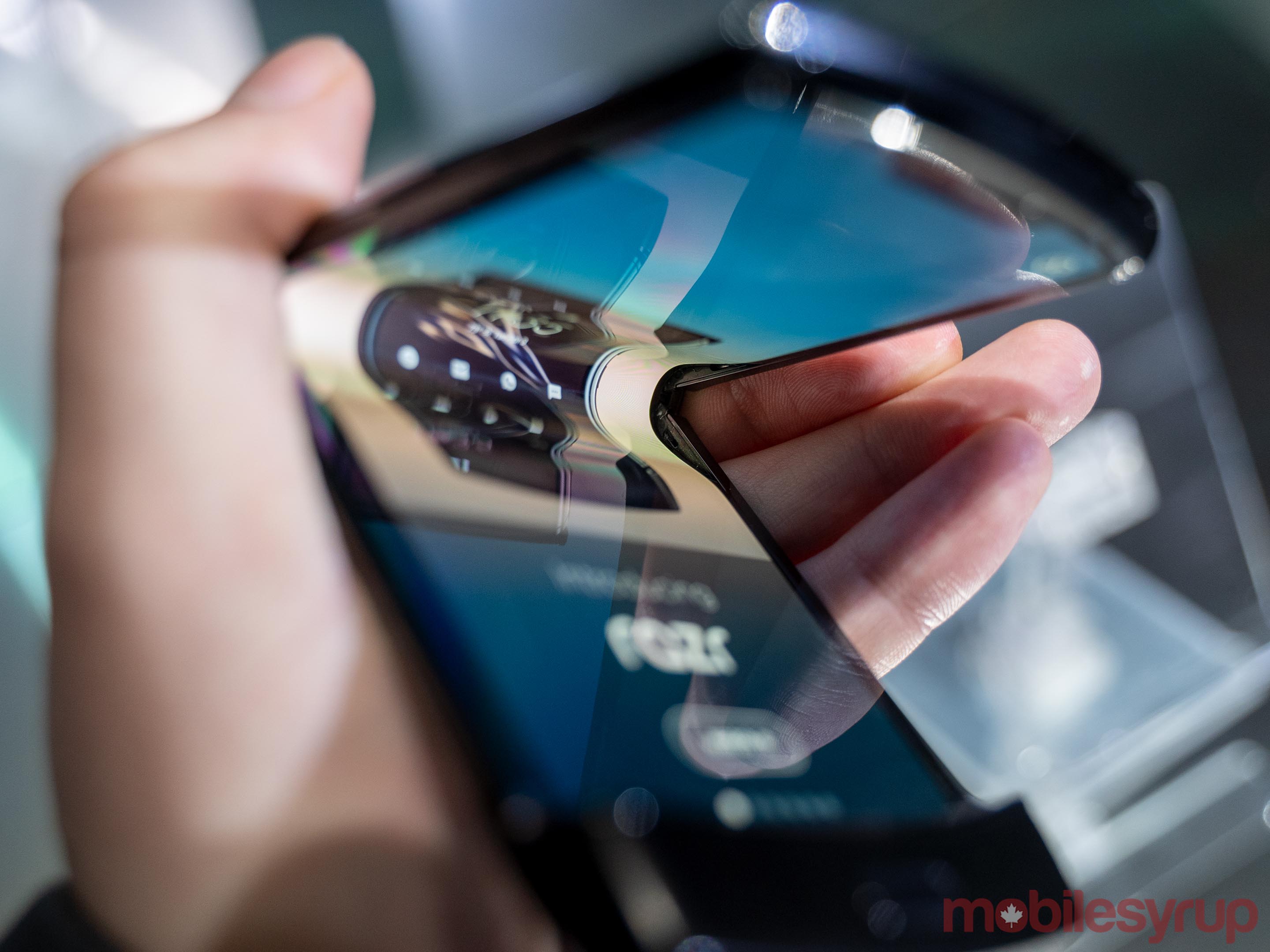
Unfortunately, the panels didn’t add quite enough support to the phone. In my limited experience with folding devices, I’d say the Razr outclasses the Galaxy Fold in this area, but by no means eliminates that mushy feeling. It’s particularly noticeable in the middle where the display folds, but also at the bottom by the chin. I could see the screen physically moving under my relatively light press when tapping the home button.
While it doesn’t affect the usability of the device at all, it does make it feel cheap. Considering most of us are used to hard glass touchscreens, the Razr’s malleable display feels particularly odd. Plus, with softer display materials like this, it could be easier to damage the display.
Early concerns

Suffice it to say I have some early concerns about the durability of the Motorola Razr’s Flex View display.
The argument can be made that folding the device protects the screen from potential damage when not in use. I’d say that debris can still get in there when the device is open. Not to mention the whole hinge part, which isn’t a factor on other devices.
The longevity of the hinge is a significant factor when it comes to durability. Sure, it feels good now, but what about in six months’ time? Or in a year? Three years? These are things we’re not able to test yet and won’t be able to for some time. Considering the high price of the Razr, it may be a gamble not worth taking.
![]()
However, Motorola also has a decent warranty plan in place for those who do take the gamble. It says it will repair or replace devices with display defects incurred during normal use for free. Additionally, it will offer 24/7 chat support and 14 hours per day direct access to an agent with device analytics. Finally, Motorola offers 24-hour turnaround and free advanced exchange support in the case that a display failure does occur. Display replacements outside of the warranty cost $299 USD ($396 CAD), which isn’t cheap.
Motorola hasn’t detailed its warranty plan for Canadian buyers yet, but I’d expect it to have a similar level of support.
But that fold though
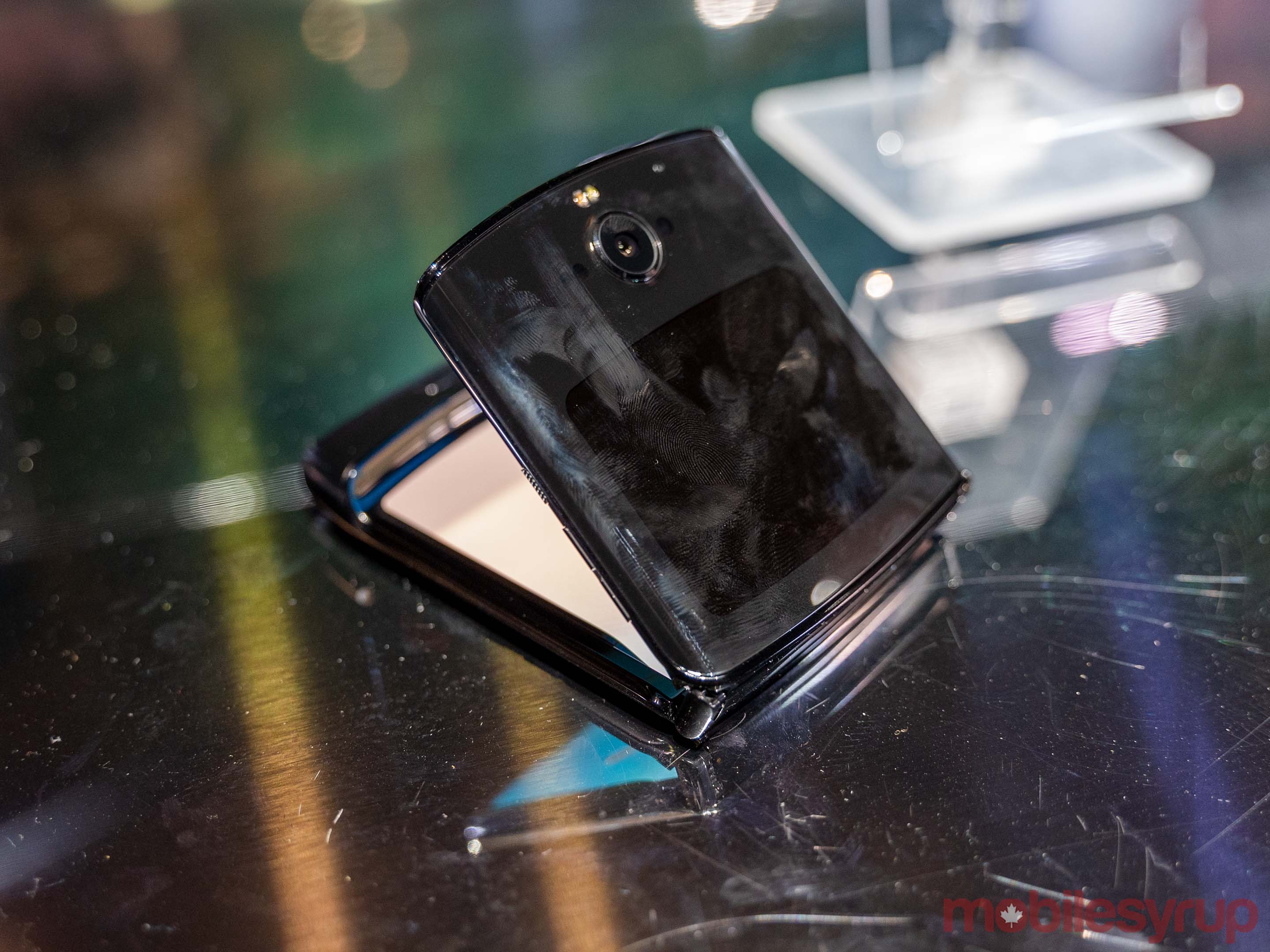
All that said, when you first pick up and fold the phone, it feels amazing. The device folds smoothly and with a satisfying snap. And yes, you can answer and end calls by opening the display. Hanging up hasn’t been this satisfying since the first flip phone.
Aside from the feel, the Razr’s fold accomplishes a few other things. For one, it makes the device significantly more compact. The Flex View display measures in at 6.2 inches across, making it a sizable display. But it’s half that when folded, so it can slide into a pocket easily.
The folding display also partially solves the current conundrum of phones: getting lost in an internet rabbit hole when you just want to check the time or a notification. Thanks to the secondary external ‘Quick View’ display, users can check messages, access quick settings like flashlight and Wi-Fi, check and respond to messages, access Google Assistant and more. It’ll take further testing to determine the usefulness of the Quick View display, but my hope is it will allow me to triage notifications and keep from opening the phone unless I really need to.
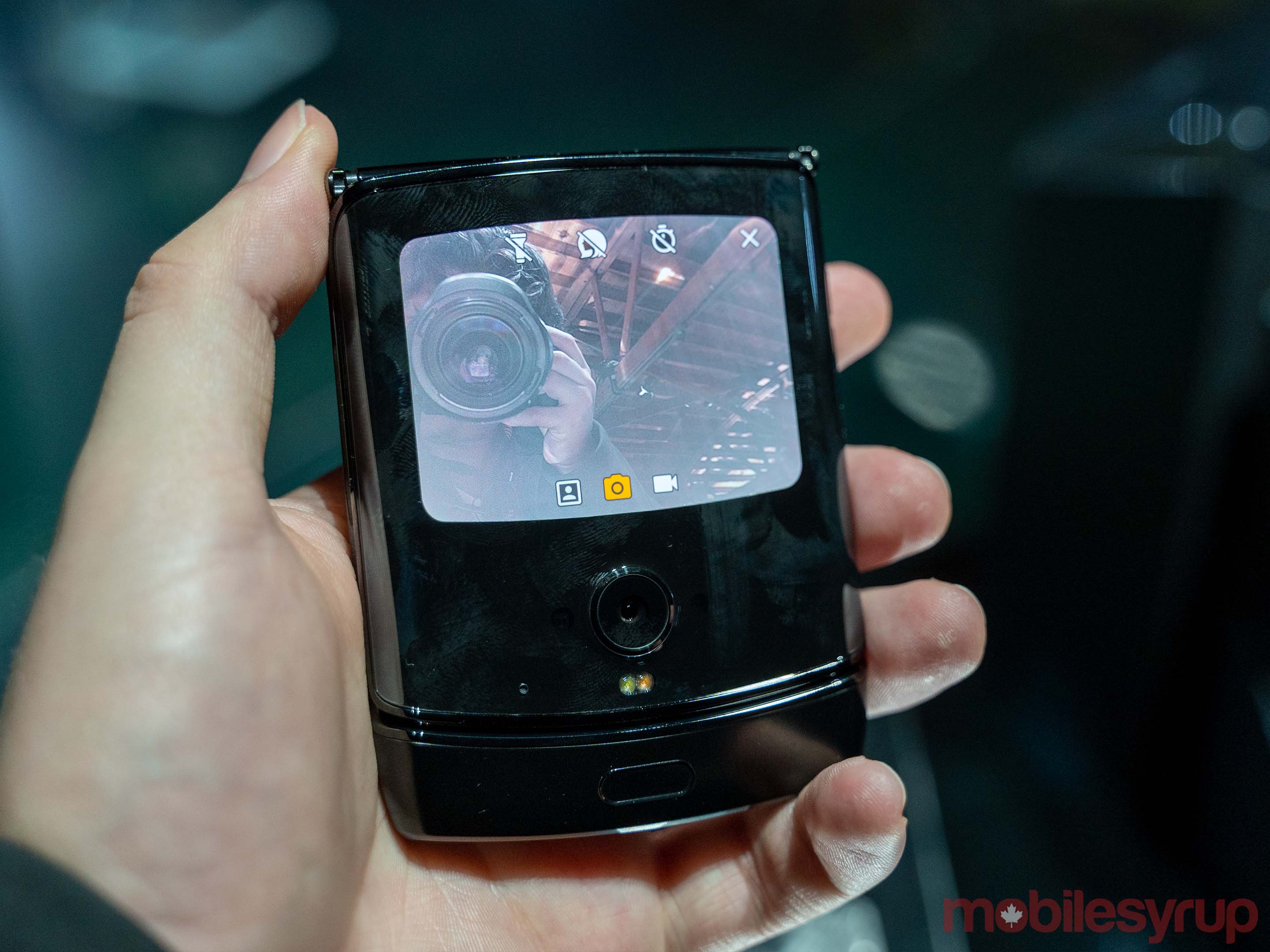
Motorola really stuck with the original Razr design with the phone as well, even down to the large bottom bezel. If ever you could complain about a phone having a chin, this is the one. Thankfully, I found it didn’t impede using the phone. Typing and navigating the screen was a breeze.
Plus, the design allowed Motorola to stick a physical fingerprint sensor on the chin, which allows users to unlock the device when folded and unfolded. Considering you can use Google Pay without unfolding the device, this is a handy implementation.
Disappointing specs for the price
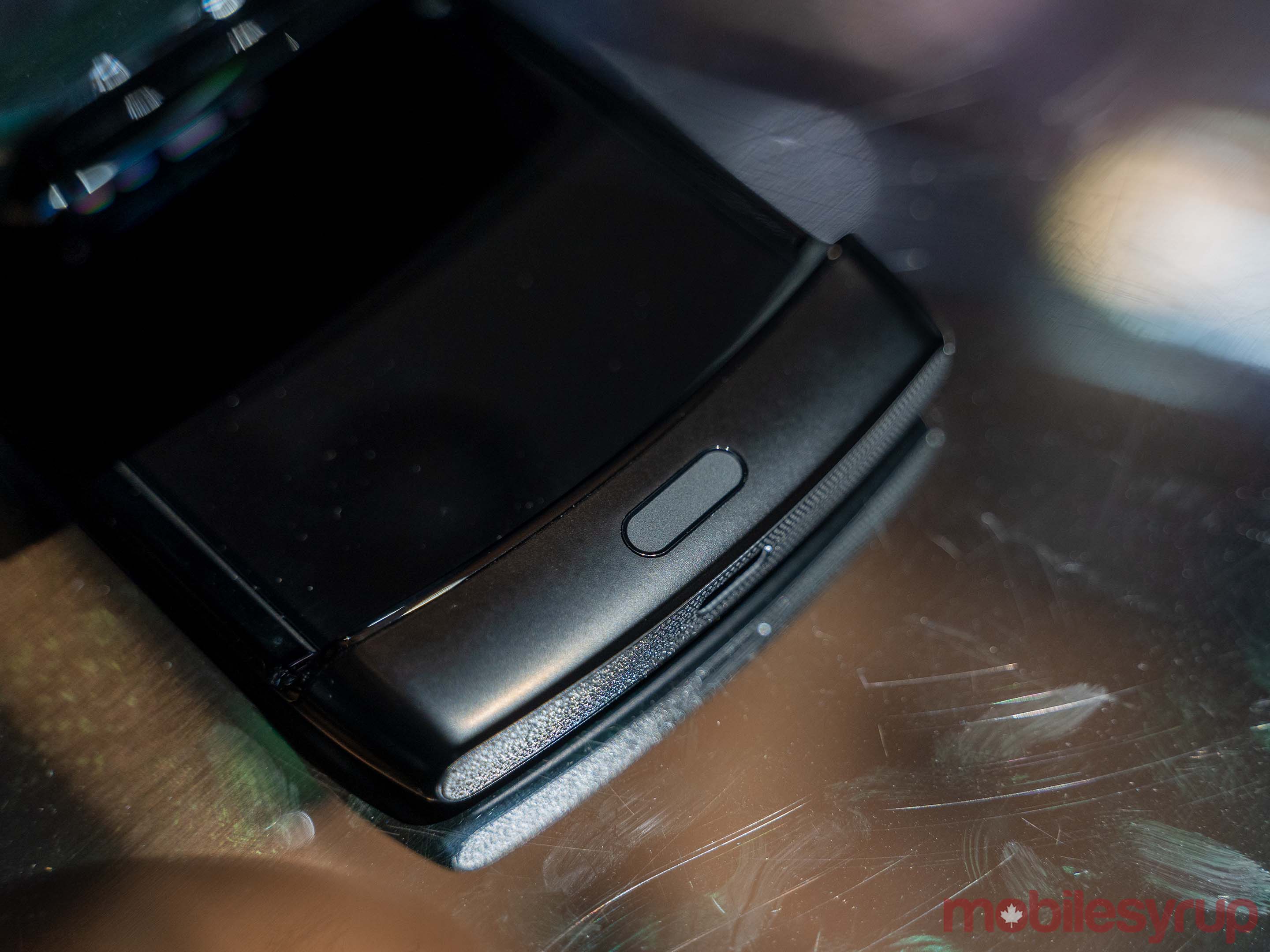
Unfortunately, the design also held sway over some of the specs. To achieve the thinness of the phone, Motorola opted for the less powerful Snapdragon 710 over the 855 powering most Android flagships. The 710 is slower, but that helps with thermal and power management. However, the Razr offers some solid specs in other areas. It clocks in with 6GB of RAM and 128GB of storage. The battery is a middling 2,510mAh.
Likewise, Motorola opted for a 16-megapixel rear shooter to save space. While it needs further testing, in my brief time with it at the event, it didn’t perform well. Granted, the lighting was abysmal — even my Pixel 4 was struggling — but the results didn’t give me high hopes.
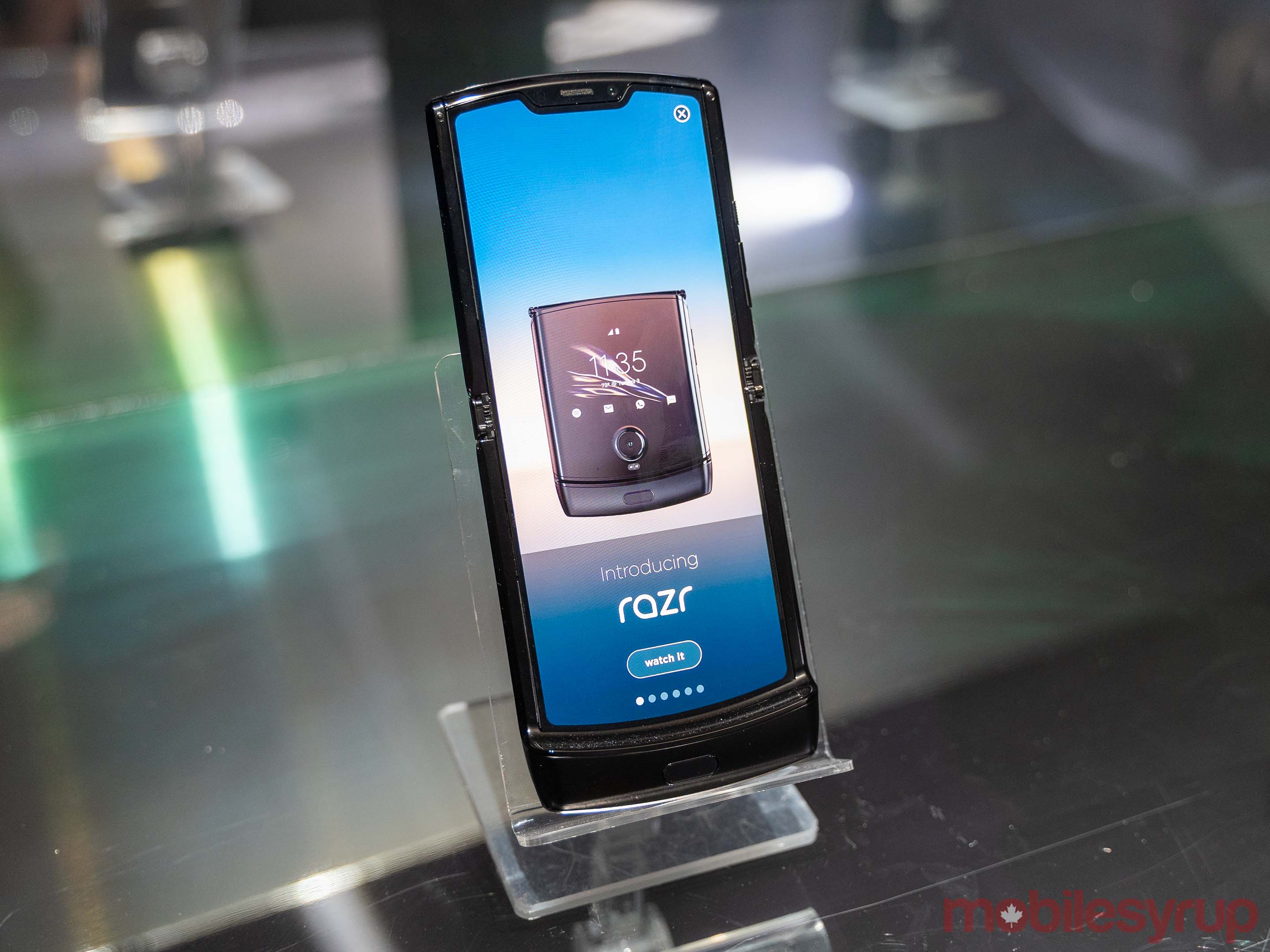
Ultimately, the specs will make the Motorola Razr a hard sell. Internally, it’s an incredibly mid-range device. Externally, it’s an excellent folding phone that may prove enjoyable to use. Considering it costs $1,499.99 USD (roughly $1,987.34 CAD), it’s significantly more expensive than almost every other device available on the market.
At the same time, it’s arguably the most affordable of the foldable devices, although neither Huawei’s Mate X or Samsung’s Galaxy Fold are currently available in Canada.
Make no mistake: if you’re buying the Razr, it’s for the fold. And you’re paying a pretty penny to do so.
The Motorola Razr will be available in Canada in early 2020.
MobileSyrup may earn a commission from purchases made via our links, which helps fund the journalism we provide free on our website. These links do not influence our editorial content. Support us here.


